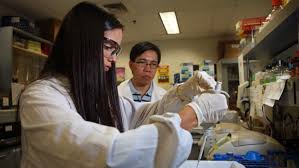
Nearly 1.3 million science advocates participated in the March For Science rallies across the globe, including 1,700 in San Antonio, however, the real movement should be in encouraging more youth to enter science, technology, engineering and math careers in the U.S.
“Growing up in a Hispanic household taught me perseverance through tough obstacles. That’s a trademark of our community. The path to a career in engineering wasn’t always easy, but focusing on my goals and never having quitting as an option got me to where I am, but there’s more work to do,” said Alexander Garcia, who participated in the Science March in San Antonio.
The U.S. ranks 17th in science and 25th in mathematics among industrialized countries, with over 500,000 technology jobs vacant. Over the past five years, thousands of Latino high school students have flocked to efforts by the U.S. Army and Hispanic Heritage Foundation to promote STEM careers and with nearly one out of four students being Latino in U.S. school; the challenge is straightforward: invest in diversifying the STEM fields.
“Plus, we need to compete in the global economy. As Americans, we’re not comfortable being 17th or 25th in anything. We need to get back to the top where we belong, but we also need to be more strategic about where to invest,” said Antonio Tijerino, president and CEO of the Hispanic Heritage Foundation.
Latinos are now entering two-and-four-year colleges than ever before – 35 percent more, ages 18 to 24, enrolled in 2014 compared to 22 percent in 1993, according to Pew Research Center. At present, we have the opportunity to get creative and work with partners to invest in Latino students going full “STEM” ahead.

Recent Comments